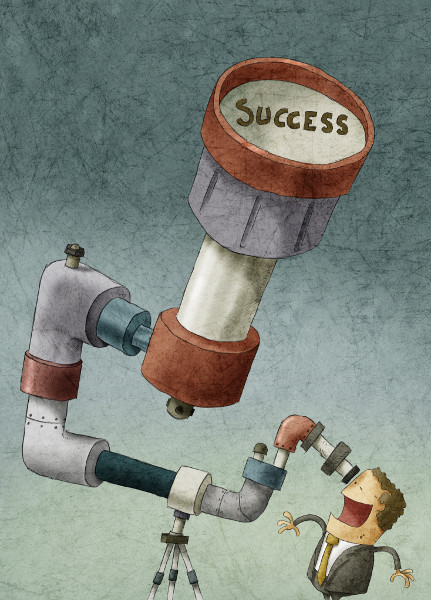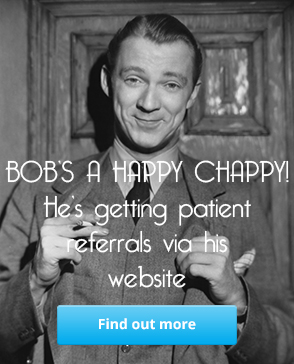2016, What's The Future For Audiology?
-
By Geoffrey Cooling on 22nd December 2015

What brings the New Year?
The future we have all spoken about seems to be approaching ever faster! You know that statement would be funny if it actually wasn't such a serious matter for so many. Is 2016 going to be the year for massive change in the Audiology profession and Industry? Yes, no and maybe. Let's look at what we know, how it might affect us and perhaps what we can do. In the next part I will take a little deeper look at exactly what we can do in Practice that will help us into the future.
What next?
Let's look at what we know, PCAST has definitely set the terms for next year. There is a good possibility that regulation in the States will be relaxed. Will there be a large influx into the market for non or lighter regulated PSAPs? Hell Yes!.
New players
There are a significant amount of possible new players in the market place. Samsung is to launch a hearing device next year. In fact rumour has it that they might in fact launch hearing aids and PSAPs. We will have to wait and see what happens there, but if regulation changed it would probably make sense for them to go down the PSAP route first. Higher volume and mass production is where their traditional business model lies after all.
Bose were a significant player in the PCAST situation, any bets on a Bose PSAP? Whispers from Apple indicate a possible release of hearing aid type technology, possibly an Apple branded PSAP or hearing aid. If Samsung, Apple and Bose get in on the action, how long before the king of mainstream audio Sony or any of the other main stream audio and electronics manufacturers begin to think about the market?
Not just them, I am aware of many known and unknown players working towards hearables. The addition of hearing aid software is not necessarily a big deal, in particular if someone comes up with an easily added open source killer application for it. So, there will definitely be one new player in the market and dependent on changes in regulation there may be many more.
What's the issue
Most of these players will look at providing their products through non traditional channels. There are several reasons for that, the primary one being that we don't seem to be very good at selling hearing aids. Yup, I said it, for further enlightenment take a look at "Failing Your Patients". Beyond our traditionally bad penetration rate, and probably the real reason for non traditional channels, is commercial considerations.
Reaching the end user direct through online and existing distribution channels just makes sense for the big electronics firms. Reaching the end user direct through online channels and existing electronics distribution channels makes perfect sense for the hearables manufacturers. It gives them global reach and volume sales without having to set up an on the ground distribution channel.
We are probably the last people on their minds
That is the truth, the audiology profession at retail level is probably the very last people they would think about for distribution. We haven't really helped ourselves with that one though. Our response to PSAPs has been traditionally bad because many of us saw them as a threat as opposed to an opportunity. I don't understand why though, we know that first time buyers are completely focused on price, second time buyers are always focused on quality and SERVICE. So where is the threat from supplying PSAPs?
Changing hearing test landscape
There is an app for that you know! The proliferation of good, decent quality hearing screening apps will just increase. The ability to take bone conduction readings electronically is already there, the marriage of both will ensure that in depth screening will be possible either remotely or automatically sooner than we like to think.
Is it a bad thing?
Yes, no, maybe! the proliferation of such easily available apps for self screening could easily increase the perception of hearing health importance and self referral. We may in fact see more and more enquiries from people who say "I did a screen test and I think it shows a hearing loss". I know Unitron is relatively sure that this may well happen, they have consistently updated their conceptual idea of their available apps in line with this outlook. However, we know that this tech is a double edged sword.
A good app with in depth screening ability will allow the suppliers of PSAPs offer a better customisation service to their customers. Eargo offers this customisation service for extra money, they don't have an app yet for testing but I don't think it will be too long before they consider it.
Changing consumer demand
This is the one thing that will force most change upon the Audiology Profession and Industry in 2016. Consumers will demand what they demand and it is up to us to meet that demand or become irrelevant. That is what will happen, we will completely lose our relevance in the lives and needs of consumers. The key here is that the consumer doesn't often know what they want. They have ideas, but those ideas are very rarely a finished product concept. For instance, everything an iPhone is, was available in a handheld computer like a Compaq Ipaq back in the late nineties early 2000, people just didn't realise that is what they wanted.
I mean we have a fair idea of what they want already, in fact we have a glut of data. Marketrak, EuroTrak, the statements of hearing aid advocates, feedback from hearing aid users. The information is all there, in my own limited research I found that hearing aid users want more control, they want self fitting and self fine tuning, however, they still want the involvement of a professional in the process. In essence, they are looking for a collaborative process. We need to use all of what we know, all of the technological innovation that comes along to offer that collaborative approach.
Apps can help
Apps can in fact actually help us with deeper engagement with our customers , that is why they are becoming mainstream in our industry. You should be using them, advising your customers of them and helping them to use them to take control of their hearing. This is just the start, the manufacturers will have to move with customer demands. Some form of consumer fine tuning is coming down the line, we need to accept that and integrate it into our product offering. In fact we need to accept all forms of disruptive innovation, become familiar with them, embrace them and use them to ensure that we retain our relevance to the consumer in 2016.
Shape the killer product
We need to shape the killer product, but that product needs to be us. We, our knowledge, our experience, our qualifications and our service are the killer product. It is the one thing that can tie all of the disparate strands together. We need to be the point of expertise for audio experience for people with hearing loss. That is the simple strategy that will allow us to remain relevant for the consumer of 2016 and beyond.
Because if we lose our relevance, we lose everything

